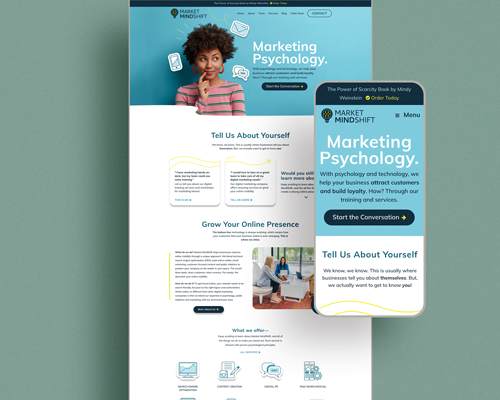8 Reasons SEO is Crucial in Web Design: How to Make Your Website Beautiful and Functional
In today’s digital landscape, having a visually stunning website is only part of the equation. To truly succeed online, your website must not only captivate visitors but also be easily found by search engines. This is where the integration of SEO (Search Engine Optimization) into web design comes into play. SEO ensures that your website is not just a pretty face but also a powerful tool that drives traffic, engages users, and supports your business goals. Here are eight reasons why SEO is a critical component of effective web design.

1. Increased Visibility in Search Engines
The most obvious benefit of SEO is its ability to boost your website’s visibility on search engines like Google. When SEO is considered during the design phase, it ensures that your website is structured in a way that search engines can easily crawl and index. This leads to higher rankings in search results, making it more likely that potential customers will find your site when searching for relevant keywords.
2. Enhanced User Experience (UX)
SEO and UX go hand in hand. A website designed with SEO in mind is usually more user-friendly. For example, fast load times, mobile responsiveness, and easy navigation are all key factors in both SEO and UX. By prioritizing these elements during the design process, you create a website that not only ranks well but also provides a seamless experience for users, keeping them engaged and reducing bounce rates.
3. Mobile Optimization
With more than half of all web traffic coming from mobile devices, mobile optimization is no longer optional. Google’s algorithm favors mobile-friendly websites, so incorporating SEO practices into your web design ensures that your site is optimized for mobile users. This includes responsive design, which adjusts the layout of your website depending on the device being used, providing a consistent user experience across all platforms.
4. Improved Site Speed
Site speed is a critical ranking factor for search engines, and it significantly impacts user experience. Slow-loading websites frustrate users, leading to higher bounce rates and lower conversion rates. By integrating SEO best practices during the design phase, such as optimizing images, enabling browser caching, and minimizing HTTP requests, you can ensure your website loads quickly, improving both your SEO and user satisfaction.
5. Content Optimization
Content is king in the world of SEO. However, even the best content won’t perform well if it’s not properly optimized. SEO-focused web design involves structuring content in a way that search engines can easily understand. This includes using proper heading tags, incorporating keywords naturally, and ensuring that your content is relevant and valuable to your audience. Optimized content helps your website rank higher in search results and provides users with the information they’re seeking.
6. Better Conversion Rates
A well-designed website that incorporates SEO practices is more likely to convert visitors into customers. SEO strategies like clear call-to-actions (CTAs), optimized landing pages, and user-friendly forms guide users through the buyer’s journey, making it easier for them to take the desired action, whether it’s making a purchase, signing up for a newsletter, or filling out a contact form.
7. Long-Term Results
Unlike paid advertising, which stops delivering results as soon as you stop paying, the benefits of SEO are long-lasting. When SEO is built into your website’s design from the start, it creates a strong foundation for long-term success. Over time, as your website gains authority and continues to rank well for relevant keywords, you’ll enjoy sustained organic traffic and ongoing business growth.
8. Cost-Effective Marketing
Investing in SEO during the web design phase is a cost-effective way to maximize your marketing budget. While SEO requires an upfront investment in time and resources, the return on investment (ROI) is often much higher than other digital marketing strategies. A well-optimized website attracts organic traffic without the need for ongoing ad spend, making it a smart long-term investment for your business.
Conclusion
Incorporating SEO into your web design is essential for creating a website that is both beautiful and functional. By focusing on SEO from the outset, you can ensure that your site not only looks great but also performs well in search engine rankings, drives traffic, and converts visitors into customers. At Mash Creative Co., we specialize in designing websites that are optimized for both search engines and users, helping our clients achieve their digital marketing goals. Contact us today to learn more about how we can help you build a website that’s as effective as it is attractive.



